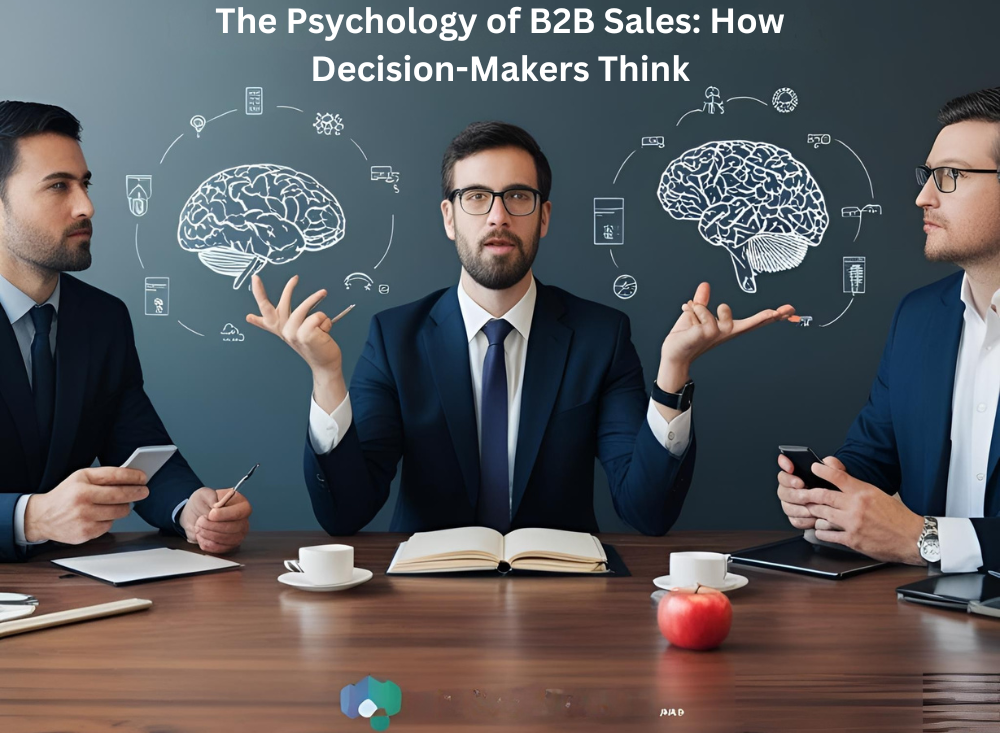
Understanding the psychology behind B2B sales is crucial for closing high-value deals. Unlike B2C sales, where impulse buying is common, B2B decision-makers rely on logic, risk assessment, and long-term value when making purchasing decisions. To influence them effectively, sales professionals must recognize the factors that shape their thinking and buying behavior.
In this article, we’ll explore the psychological triggers that drive B2B decision-making and how you can leverage them to improve your sales strategy.
1.The Rational vs. Emotional Balance
B2B decision-makers are often perceived as purely logical, but emotions still play a significant role in their choices. While data and ROI analysis guide their decisions, factors like trust, confidence, and fear of making a bad choice also influence the final outcome.
How to Leverage This:
✅ Back up your sales pitch with solid data, case studies, and ROI projections.
✅ Build credibility through testimonials and social proof.
✅ Address emotional concerns, such as career risk, by positioning your solution as a safe and beneficial choice.
2.Risk Aversion and Loss Aversion
B2B buyers are naturally risk-averse because their decisions impact the company’s success, their team, and even their own career. Loss aversion—the tendency to fear losses more than valuing gains—can delay decision-making or result in sticking with a familiar but suboptimal solution.
How to Leverage This:
✅ Highlight the risks of inaction (e.g., lost revenue, inefficiencies).
✅ Offer a pilot program or proof of concept to minimize perceived risk.
✅ Provide guarantees or flexible terms to reduce the fear of loss.
3.The Power of Social Proof
B2B decision-makers look for validation before making big investments. They want to know that others—especially their industry peers—have successfully used your solution.
How to Leverage This:
✅ Showcase case studies featuring companies similar to your prospect’s business.
✅ Use testimonials and industry recognition to establish credibility.
✅ Encourage referrals from existing customers to build trust.
4.The Influence of Group Decision-Making
Unlike B2C sales, where a single buyer often makes the decision, B2B sales involve multiple stakeholders. Each decision-maker has different priorities and concerns, making the process more complex.
How to Leverage This:
✅ Identify key stakeholders early and tailor messaging to their specific concerns.
✅ Equip your internal champion (the person advocating for your solution) with the right materials to convince others.
✅ Use multi-channel communication (email, presentations, executive summaries) to address the needs of different decision-makers.
5.The Anchoring Effect
The first piece of information a buyer receives—whether it’s pricing, product features, or competitor comparisons—creates a psychological anchor that influences their decision.
How to Leverage This:
✅ Set the anchor early by positioning your value before discussing price.
✅ Frame pricing in a way that highlights savings, ROI, or competitive advantages.
✅ Compare your solution against lower-performing alternatives to establish a clear contrast.
6.The Need for Personalization
B2B buyers expect a personalized experience that directly addresses their pain points. A generic pitch rarely resonates with high-value prospects.
How to Leverage This:
✅ Research the prospect’s business, challenges, and goals before reaching out.
✅ Customize proposals, demos, and presentations to reflect their specific needs.
✅ Use data and AI-driven insights to tailor your approach.
7.The Principle of Reciprocity
People feel compelled to return favors. In B2B sales, offering something valuable upfront—such as insights, free consultations, or exclusive reports—can make decision-makers more likely to engage and reciprocate with interest.
How to Leverage This:
✅ Share valuable industry insights or research before pitching your product.
✅ Offer a free trial, audit, or strategy session to showcase your expertise.
✅ Provide helpful resources that position you as a trusted advisor, not just a salesperson.
8.The Urgency and Scarcity Effect
If a decision seems open-ended, buyers may delay indefinitely. Creating a sense of urgency or scarcity can push decision-makers to act.
How to Leverage This:
✅ Highlight time-sensitive opportunities, such as limited-time pricing or exclusive deals.
✅ Emphasize competitive pressure (e.g., “Your competitors are already using this”).
✅ Show potential revenue lost due to delays in decision-making.
Final Thoughts
B2B decision-makers think logically but are still influenced by emotions, risk perception, and psychological triggers. By understanding their mindset and applying these psychological strategies, you can build stronger relationships, reduce objections, and close more high-value deals.